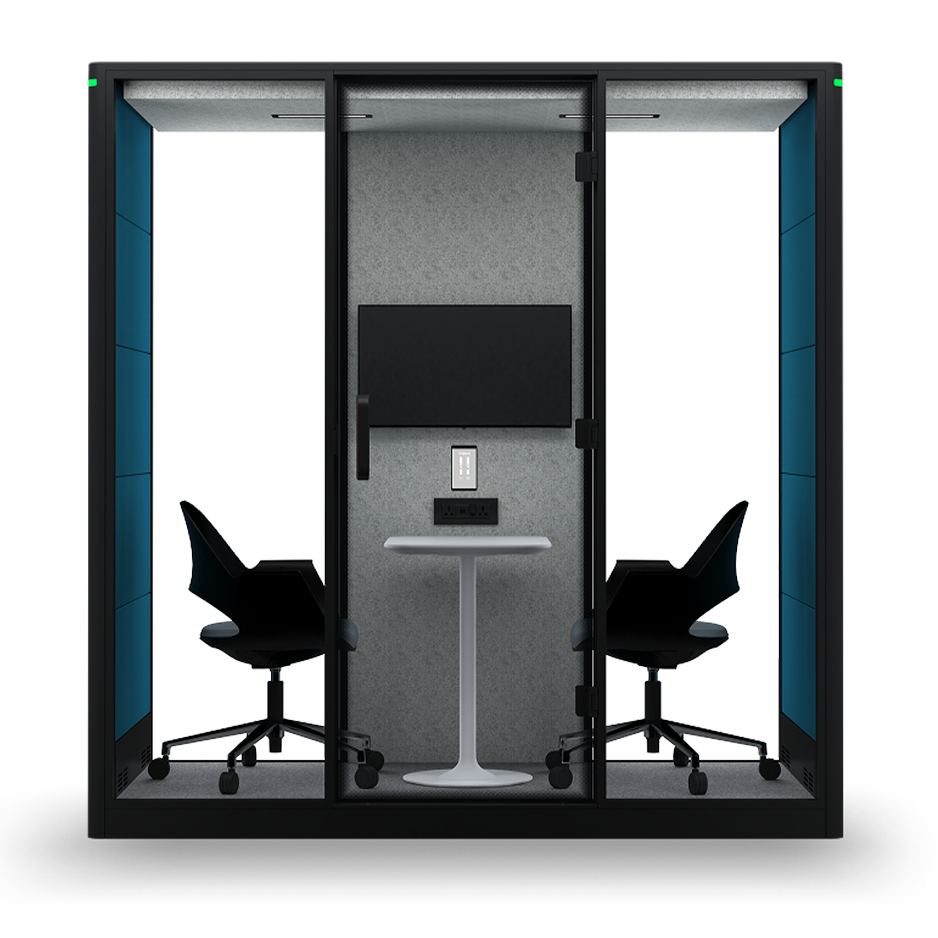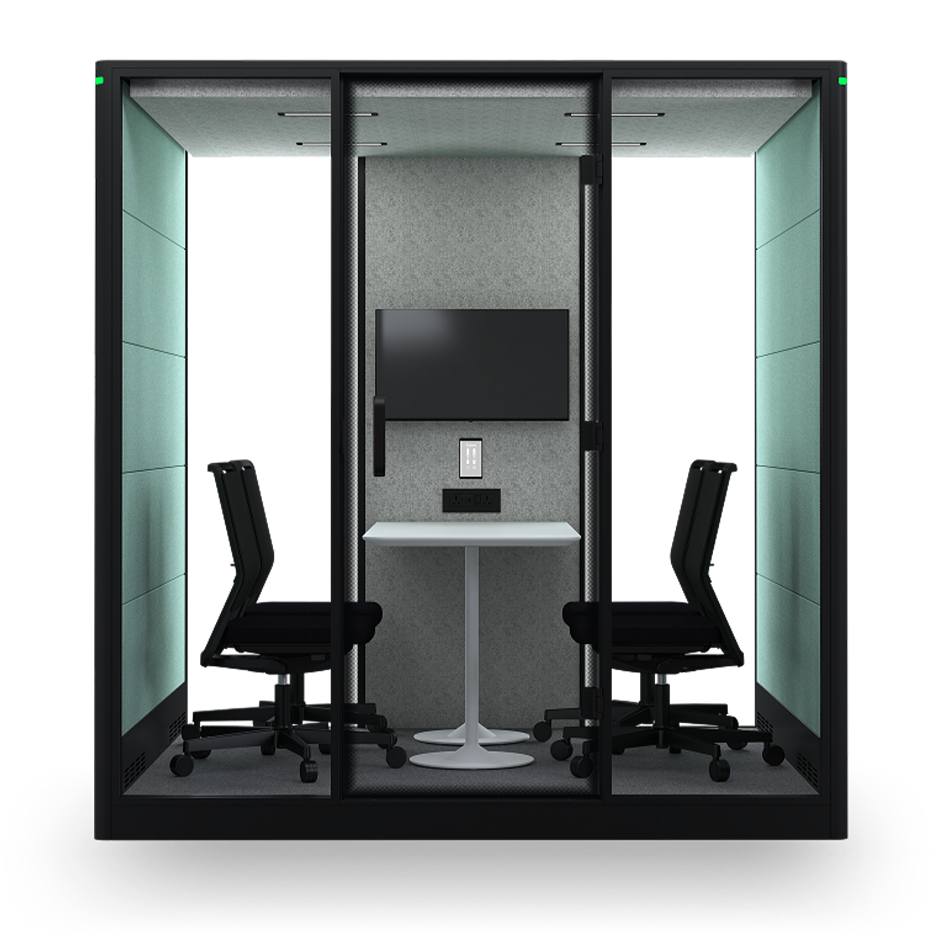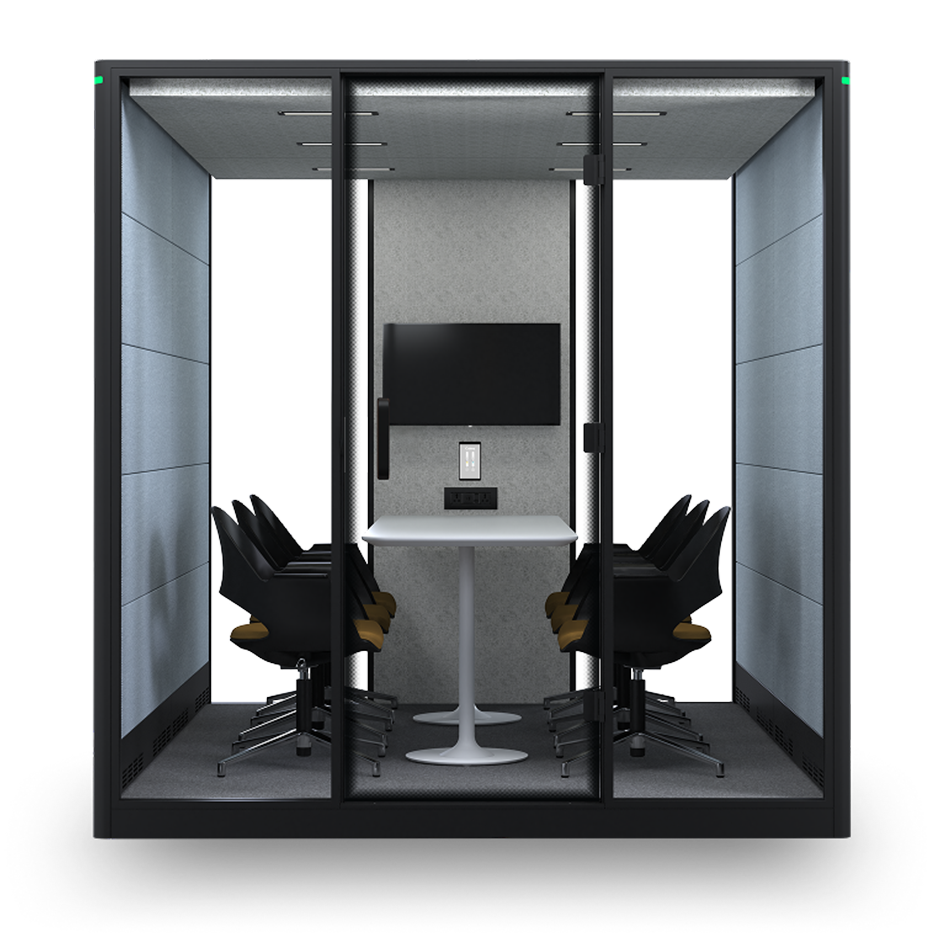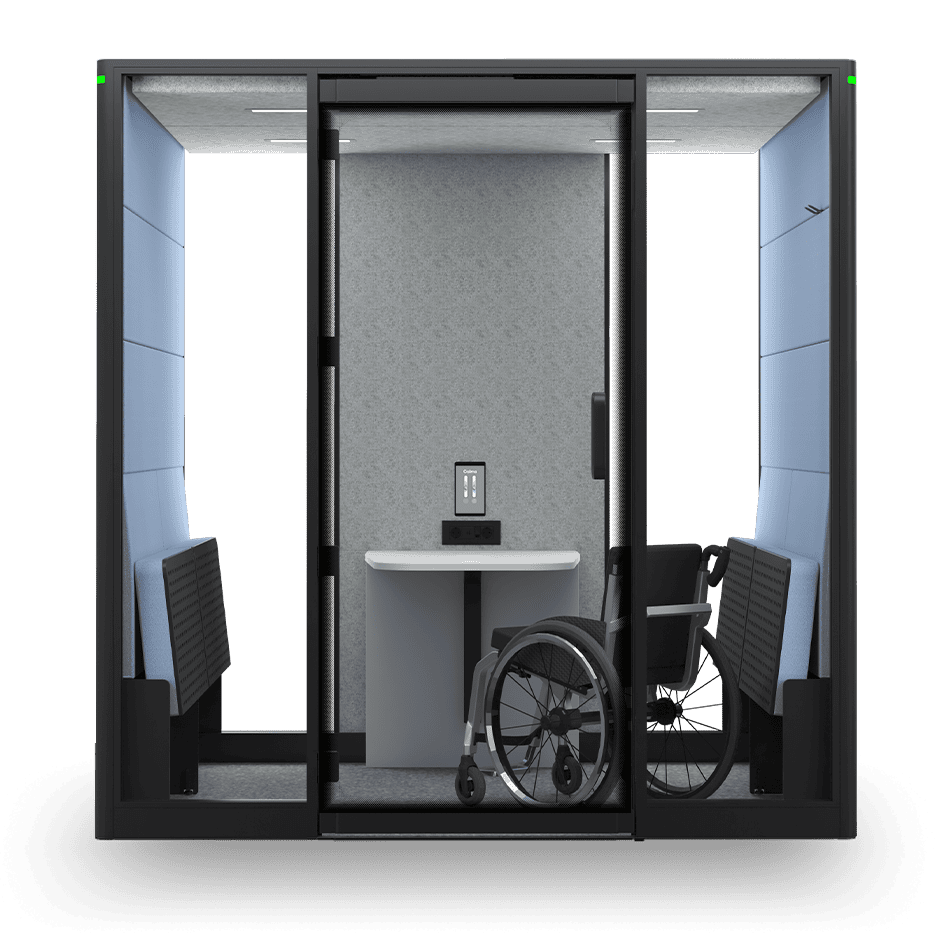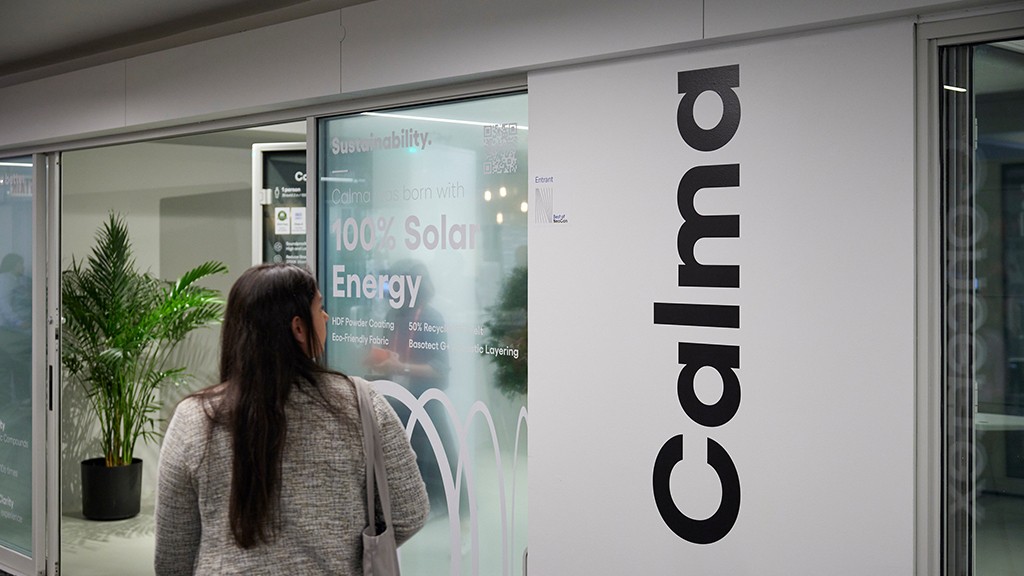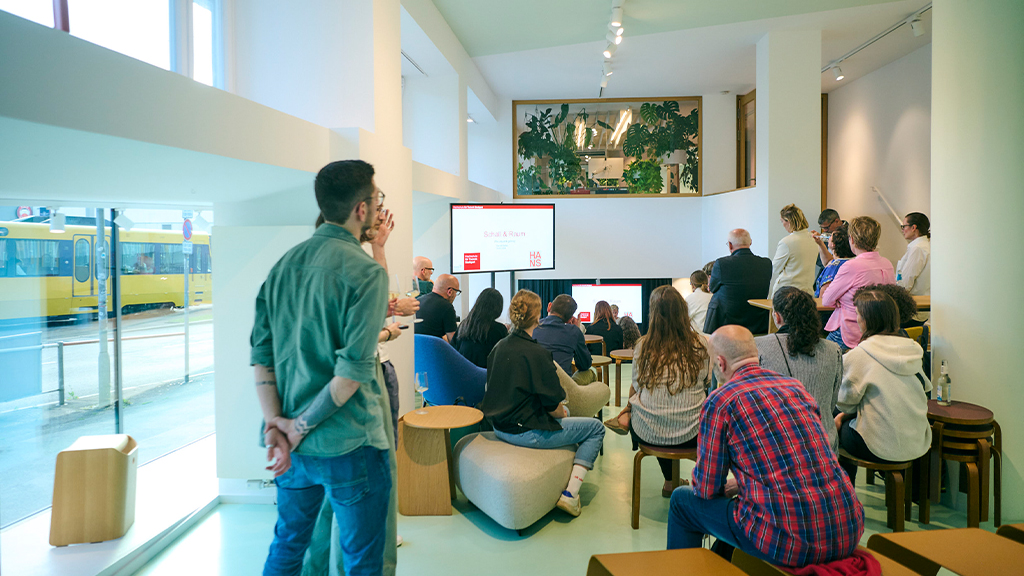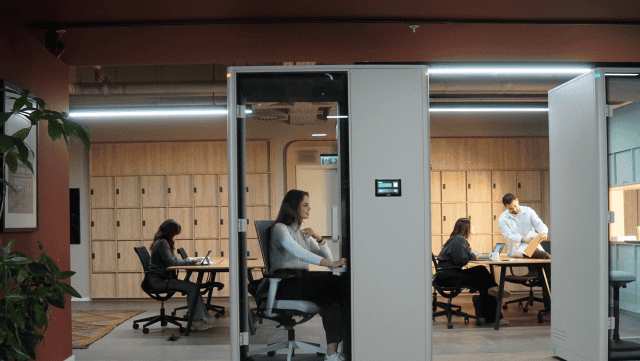We are looking forward to meeting you at The MART Chicago. Visit 10th Floor, Suite 106, join the Calma Experience.
What is Class A and How We Get it?
Class A acoustics represent the pinnacle of soundproofing technology, ensuring an environment where external noise is minimized to the greatest extent possible. This classification is crucial in creating spaces that promote concentration, privacy, and overall well-being. But what does it take to achieve Class A status, and how does Calma integrate these standards into its design?
The Science Behind Soundproofing
Achieving Class A acoustics involves a meticulous combination of materials, construction techniques, and rigorous testing. The primary goal is to reduce the transmission of sound from external sources into the pod and vice versa. This is accomplished through multiple layers of sound-absorbing and soundproofing materials, each serving a specific function in mitigating noise.
Materials and Construction
Calma pods utilize advanced materials such as Basotect G+, an open-cell melamine foam known for its superior sound absorption properties. This material is strategically placed within the pod’s structure to capture and dampen sound waves. Additionally, the pod’s walls are constructed with multiple layers, including a dense core layer that acts as a barrier to sound transmission.
Testing and Certification
To achieve Class A certification, Calma pods undergo rigorous testing according to international standards such as ISO 23351-1. This testing measures the pod’s ability to reduce sound levels across a range of frequencies, ensuring comprehensive soundproofing performance. The results of these tests are then validated by independent certification bodies, confirming the pod’s adherence to Class A standards.
Benefits of Class A Acoustics
The benefits of Class A acoustics are manifold. For office environments, they provide a sanctuary from the typical noise pollution that can hinder productivity and increase stress levels. Employees can engage in confidential conversations, focus on detailed tasks, and participate in virtual meetings without the distraction of external noise. This creates a more productive and serene work environment, ultimately contributing to improved job satisfaction and performance.
Brilliant Communication
While silence is golden, effective communication is equally essential in the workplace. Silent pods must strike a delicate balance between blocking out external noise and ensuring clear communication within the pod. Acoustic solutions that dampen unwanted sounds while preserving speech intelligibility enable seamless interactions during phone calls, video conferences, and meetings held within the pod. This fosters collaboration and teamwork, even in the midst of a bustling office environment.
Calma is leading the charge in acoustic excellence. Nurus, the company behind Calma, has its own acoustic reverberation laboratories dedicated to pushing the boundaries of sound technology. With a team of experts constantly innovating and refining their acoustic solutions, Nurus is committed to providing silent pods that not only meet but exceed the expectations of today’s discerning users. Acoustic of each Calma is meticulously calculated to perfection.
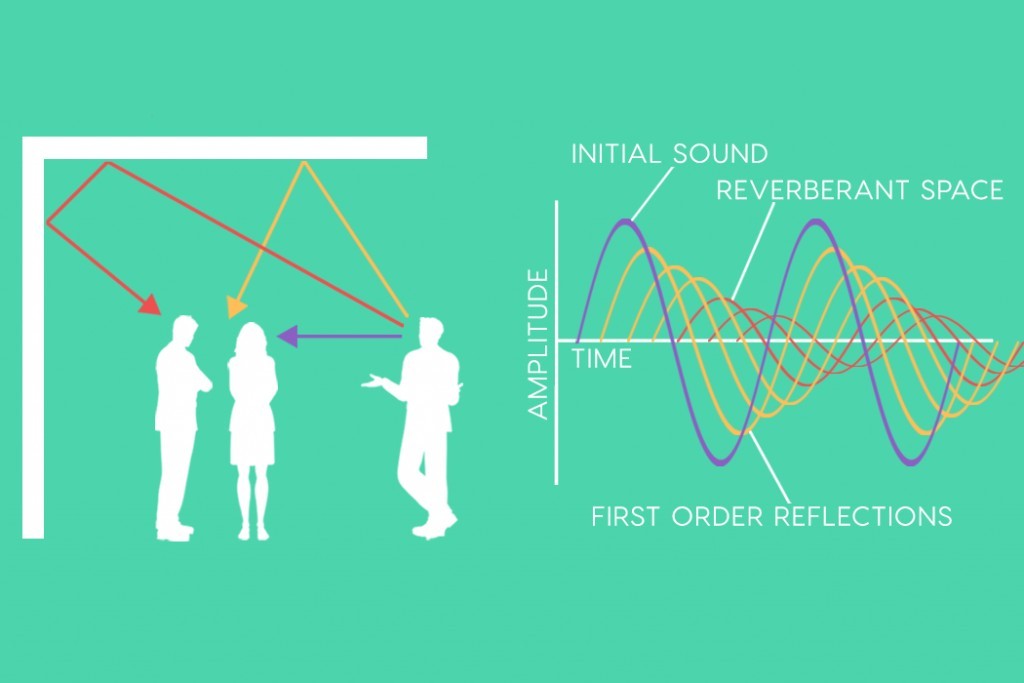
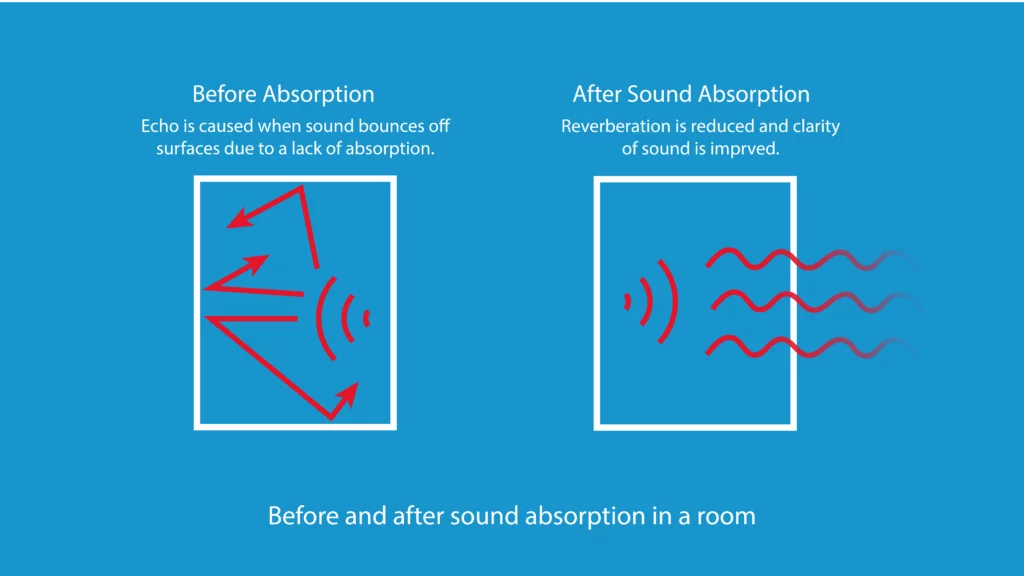
Voice Clarity
What is Voice Clarity?
Voice clarity refers to the ease with which speech can be understood without distortion or background noise interference. In the context of acoustic pods like Calma, achieving superior voice clarity involves balancing several factors including reverberation, absorption, reduction, and reflection of sound within the pod.
Reverberation, Absorption, Reduction, and Reflection
- Reverberation: The time it takes for sound to decay after being produced. In acoustics, minimizing reverberation time is crucial for clear speech and reducing echo.
- Absorption: The process by which materials capture and convert sound energy into heat, reducing the amount of sound that reflects back into the room.
- Reduction: The decrease in sound intensity as it travels through a medium or barrier, essential for preventing sound leakage.
- Reflection: The bouncing back of sound waves when they hit a surface, which can cause echoes and reduce sound clarity if not properly managed.

Auditory Health & Well-being
Auditory Health and Balance Disorders
Prolonged exposure to high levels of noise can lead to auditory health issues such as tinnitus, hearing loss, and balance disorders. These conditions are often exacerbated by environments with poor acoustic management. High and low-frequency balancing in Calma pods ensures that all ranges of sound are managed effectively, preventing the harmful impact of noise on health.
Environmental Noise Increase and Health Effects
An increase of just 5 decibels in environmental noise can double the perceived loudness, significantly affecting concentration and stress levels. Continuous exposure to such noise levels can lead to cardiovascular issues, sleep disturbances, and reduced cognitive function. Calma’s Class A soundproofing mitigates these risks by providing a controlled acoustic environment.
Impact of Constant Noise
Constant noise, such as that found in a typical office environment (around 60 decibels), can cause stress-related cardiovascular diseases by increasing stress hormone levels, blood pressure, and heart rate. On the other hand, construction sites can reach noise levels of up to 85 decibels or more, which can lead to hearing damage over prolonged exposure.
Examples of Noise Levels
- 60 decibels: Typical office environment, which can be distracting and stressful.
- 85 decibels: Construction site, where prolonged exposure can cause hearing damage.
- 30 decibels: Quiet rural area, ideal for concentration and relaxation.
Certification Significance
Being certified as a Class A soundproof pod means that Calma meets the highest standards of sound insulation, significantly reducing noise transmission. This is the best classification a pod can achieve and is held by only a small percentage of pods on the market. For users, this means exceptional privacy and concentration levels—no sound leakage for confidential conversations and no intrusion from external noise.
05/2024 IAV2




